A quick question about 747 AP/AT systems
-
Hi all,
I was watching a Cockpit Video DVD yesterday featuring the MK Airlines 747-200, and something that stuck out for me was the fact that the throttles appeared to be manually operated most of the time (if not the entire flight). From closer inspection it appears the Classic does indeed have an autothrottle system, but I'm interested as to how advanced the system actually was in real aircraft, to what extent it was used in actual service as well as how it will be simulated in the upcoming release, given that it appears engine power was a matter generally delegated to the flight engineer.Many Thanks,
Martin -
Hi all,
I was watching a Cockpit Video DVD yesterday featuring the MK Airlines 747-200, and something that stuck out for me was the fact that the throttles appeared to be manually operated most of the time (if not the entire flight). From closer inspection it appears the Classic does indeed have an autothrottle system, but I'm interested as to how advanced the system actually was in real aircraft, to what extent it was used in actual service as well as how it will be simulated in the upcoming release, given that it appears engine power was a matter generally delegated to the flight engineer.Many Thanks,
Martin@SimeonWilbury said in A quick question about 747 AP/AT systems:
Hi all,
I was watching a Cockpit Video DVD yesterday featuring the MK Airlines 747-200, and something that stuck out for me was the fact that the throttles appeared to be manually operated most of the time (if not the entire flight). From closer inspection it appears the Classic does indeed have an autothrottle system, but I'm interested as to how advanced the system actually was in real aircraft, to what extent it was used in actual service as well as how it will be simulated in the upcoming release, given that it appears engine power was a matter generally delegated to the flight engineer.Many Thanks,
MartinHello Martin,
The 747 Classic had an option of 2 autopilots actually. The -100s mostly had what is called an “approach autothrottle“. This autothrottle was meant to only be used on approach, hence the name. It was only accurate at speeds below 250kts. It wasn’t calibrated for anything above that, and would be very sporadic at any higher speeds above 250kts. This is the autothrottle you saw in the video. It was set manually for most phases of the flight. Starting with the -200, Boeing offered an option called “FFRATS” which stands for: Full Flight Regime Auto Throttle System”. This was the autothrottle system we have all come to love in most of the modern Boeings. As the name implies, it could be used in all phases of flight.
The FFRATS system had 3 buttons on the Thrust Rating Panel on bottom pedestal that allowed selection of various autothrottle modes (EPR, SPEED, MACH). FFRATS was optional on the -200s and late model -100s. It was standard on all of the -300s.
Cheers,
RobP.S. - the -SP’s had both as an option, just like the -200.
-
Referencing the FPD, this is the style of FPD they currently have shown us (approach autothrottle):
Basic Dual AP Approach Auto-Throttle FPD
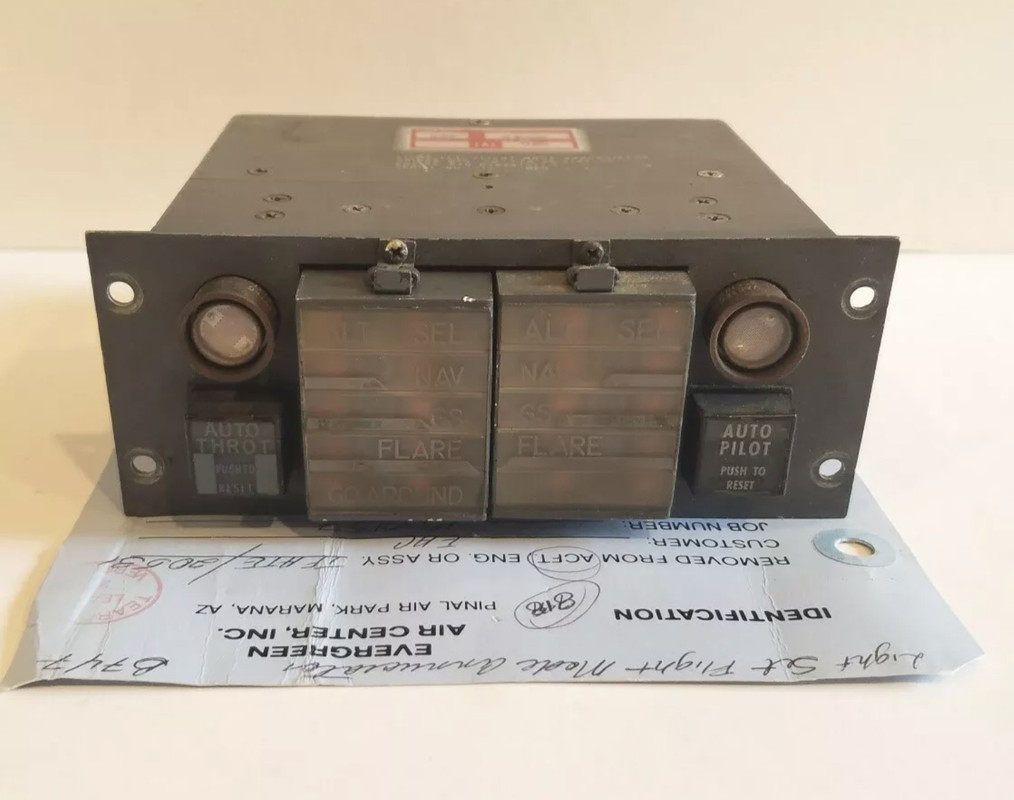
Here is the style for the FFRATS (notice the AT column)
FFRATS style "Barrel" FPD (Dual AP 3-column type)
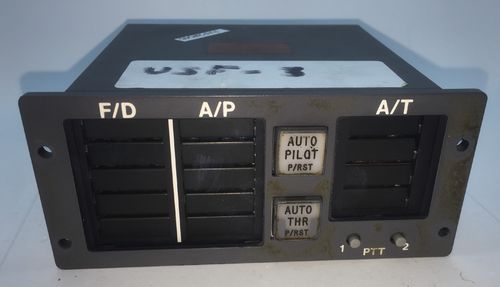
There was a 3rd style of FPD, however this was only installed on aircraft with 3 auto pilots (all 3 autopilot equipped aircraft automatically had FFRATS installed.):
FFRATS style "Barrel" FPD (Triple AP 4-column type)
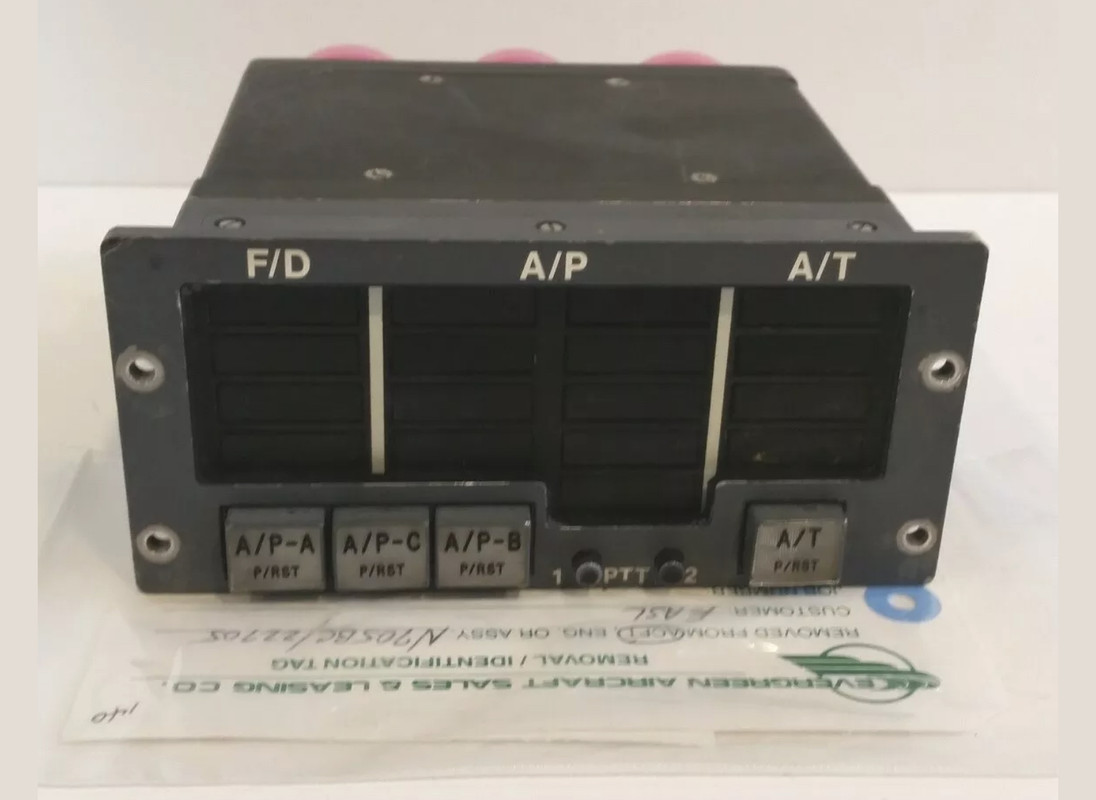
The final type of FPD one could find in the Classics was this one:
FFRATS, Triple AP, style "light cap" FPD
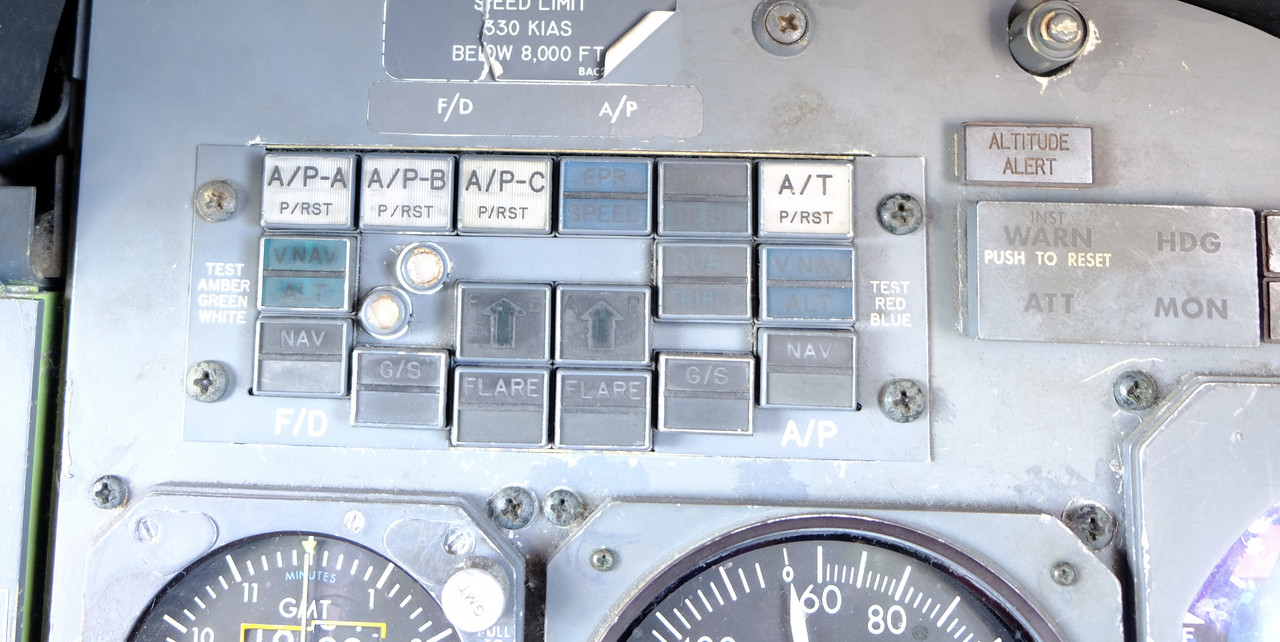
Primarily found on the -SP models, this type could be found on both FFRATS and Approach-Autothrottle types. The picture above is on a 3-autopilot, FFRATS installed aircraft. If it didn’t have FFRATS, or a 3rd autopilot, it would look like this:
Non-FFRATS, Dual AP, style "light cap" FPD
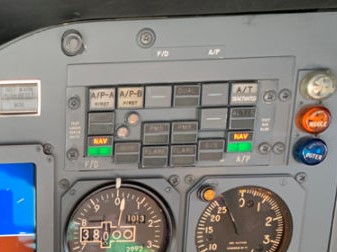

As you can see, with this style, if it doesn’t have something, you would just install a blank light cap on the panel. So this one was pretty easily configurable (albeit a lot harder to read/organize as a consequence)
Cheers,
Rob -
Regarding the differences in Trust Rating Computer between the two different autothrottle systems I mentioned... Here is the one for the old Approach Autothrottle System:
Non-FFRATS style EPRL Computer Style 1
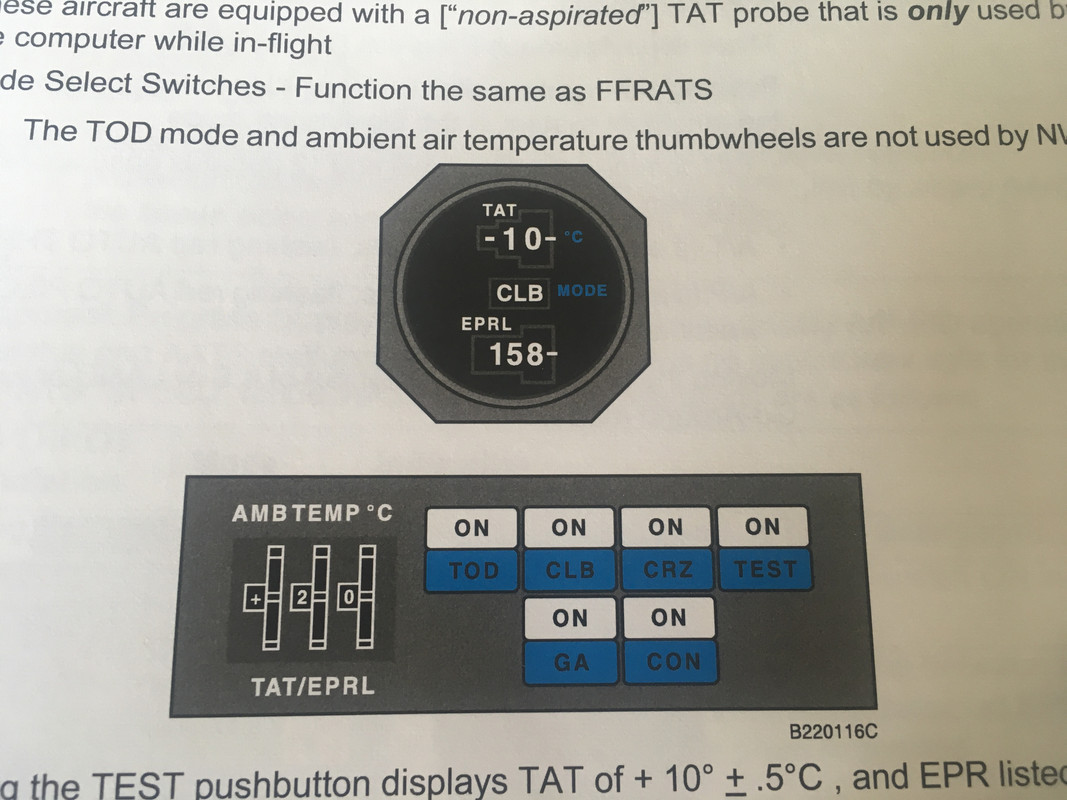
Non-FFRATS style EPRL Computer Style 2 (This appears to be the one they currently have modeled in the preview shots)
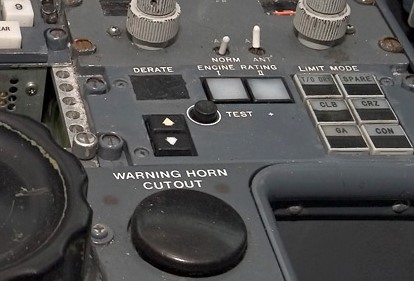
However, the oldest -100s didn’t even have this panel at all. In these -100s, EPR limits were all calculated by hand w/ charts. So, looking at pictures of earlier -100 cockpits, you won’t see this panel at all (unless it was an aftermarket mod). The -200s were first model to have an actual EPRL computer.
Here is the one for the FFRATS (notice the autothrottle selection mode buttons):
FFRATS style EPRL Computer
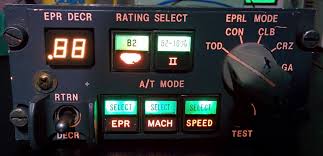
-
@SimeonWilbury said in A quick question about 747 AP/AT systems:
Hi all,
I was watching a Cockpit Video DVD yesterday featuring the MK Airlines 747-200, and something that stuck out for me was the fact that the throttles appeared to be manually operated most of the time (if not the entire flight). From closer inspection it appears the Classic does indeed have an autothrottle system, but I'm interested as to how advanced the system actually was in real aircraft, to what extent it was used in actual service as well as how it will be simulated in the upcoming release, given that it appears engine power was a matter generally delegated to the flight engineer.Many Thanks,
MartinHello Martin,
The 747 Classic had an option of 2 autopilots actually. The -100s mostly had what is called an “approach autothrottle“. This autothrottle was meant to only be used on approach, hence the name. It was only accurate at speeds below 250kts. It wasn’t calibrated for anything above that, and would be very sporadic at any higher speeds above 250kts. This is the autothrottle you saw in the video. It was set manually for most phases of the flight. Starting with the -200, Boeing offered an option called “FFRATS” which stands for: Full Flight Regime Auto Throttle System”. This was the autothrottle system we have all come to love in most of the modern Boeings. As the name implies, it could be used in all phases of flight.
The FFRATS system had 3 buttons on the Thrust Rating Panel on bottom pedestal that allowed selection of various autothrottle modes (EPR, SPEED, MACH). FFRATS was optional on the -200s and late model -100s. It was standard on all of the -300s.
Cheers,
RobP.S. - the -SP’s had both as an option, just like the -200.
@ual763 said in A quick question about 747 AP/AT systems:
@SimeonWilbury said in A quick question about 747 AP/AT systems:
Hi all,
I was watching a Cockpit Video DVD yesterday featuring the MK Airlines 747-200, and something that stuck out for me was the fact that the throttles appeared to be manually operated most of the time (if not the entire flight). From closer inspection it appears the Classic does indeed have an autothrottle system, but I'm interested as to how advanced the system actually was in real aircraft, to what extent it was used in actual service as well as how it will be simulated in the upcoming release, given that it appears engine power was a matter generally delegated to the flight engineer.Many Thanks,
MartinHello Martin,
The 747 Classic had an option of 2 autopilots actually. The -100s mostly had what is called an “approach autothrottle“. This autothrottle was meant to only be used on approach, hence the name. It was only accurate at speeds below 250kts. It wasn’t calibrated for anything above that, and would be very sporadic at any higher speeds above 250kts. This is the autothrottle you saw in the video. It was set manually for most phases of the flight. Starting with the -200, Boeing offered an option called “FFRATS” which stands for: Full Flight Regime Auto Throttle System”. This was the autothrottle system we have all come to love in most of the modern Boeings. As the name implies, it could be used in all phases of flight.
We can see this FFRATS autothrottle system in the cockpit pictures released so far. This system had 3 buttons on the Thrust Rating Panel on bottom pedestal that allowed selection of various autothrottle modes (EPR, SPEED, MACH). FFRATS was optional on the -200s and late model -100s. It was standard on all of the -300s.
I’m not sure if they will model the Approach Autothrottle system for their -100 series. It would be pretty easy to do, as it was basically just a speed hold system. Hopefully they do. Not to mention, their current style of FPD depicted is for an Approach AutoThrottle setup.
Cheers,
RobP.S. - the -SP’s had both as an option, just like the -200.
Hi Rob,
Thank you very much, that was very detailed!I had thought that the existing autothrottle at least on the early versions was likely be somewhat limited, indeed I am currently learning the Aerosoft DC8 which itself has no autothrottle, which should mean good practice on that end of things at least.
I believe there has been mention of equipment variation on different models of the JF, so I'd guess there'd be the potential for difference between the 100/200 systems.
Many Thanks,
Martin -
Yes, they have mentioned some variations will come to the 747! I posted about the FPD a while ago, and they responded that they will be brining in one of the newer style "barrel" FPDs as an option. This will be a good way to make the different variants "feel" different to the simmer. Without these slight variations, there is not much difference between the -100 & -200, for instance. The way I think would be most representative of most fleets and the progression of technology would be as follows:
747-100
- Approach Auto-Throttle
- Basic Dual AP Approach Auto-Throttle FPD
- No EPRL computer installed (Thrust & EPR Limits set manually according to charts)
747-200
- FFRATS
- FFRATS style "Barrel" FPD (Dual AP 3-column type)
- FFRATS style EPRL computer
747SP
- Approach Auto-Throttle
- Non-FFRATS, Dual AP, style "light cap" FPD
- Non-FFRATS Style EPRL Computer Style 2.
747-300
- Same as -200
if they want to get fancy, they could give the -300 triple autopilot channels, in which case it would have the following:
- FFRATS
- FFRATS style "Barrel" FPD (Triple AP 4-column type)
- FFRATS style EPRL computer
This would make each different variant feel unique in the way each is operated.
